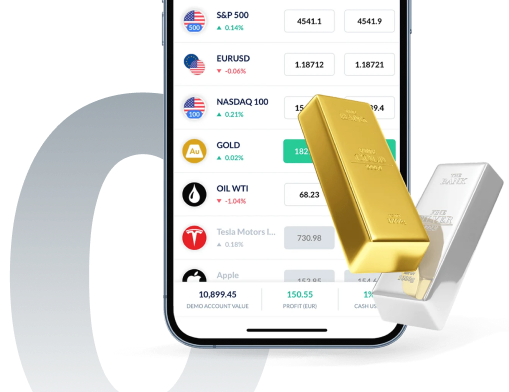Understanding what spread is in trading and its relationship with the market is key to better grasping the movements of the market. In CFD trading, the bid-ask spread is essential for the trader as it is how both derivatives are priced.
What is a spread?
In trading, the spread refers to the difference in price between the sell (bid) and buy (ask) price. It is common for brokers to quote their prices in the spread, therefore the price at which an asset is purchased will always be slightly above the underlying market, while the price at which it is sold will always be slightly below it.
Let’s have a look at an example of a bid-ask spread.
Say that the current bid price for a stock is $50 and the ask price is $55. The bid-ask spread in this case is $5 ($55 - $50). This means that a trader can buy the stock at $50 and sell it at $55.
Experience Skilling's award-winning platform
Try out any of Skilling’s trading platforms on the device of your choice across web, android or iOS.
71% of retail CFD accounts lose money.

What impacts the bid-ask spread
The spread varies depending on the underlying asset, the market conditions, and the level of market liquidity. Typically, the bid-ask spread is narrower for assets that are highly traded and have a large number of market participants, which drives the bid and ask prices closer together.
A trader might use this information to decide whether or not to buy or sell a particular asset. A narrower bid-ask spread may indicate that the asset is more liquid and therefore easier to trade, while a wider bid-ask spread may indicate that the asset is less liquid and more difficult to trade.
What are spread charges?
In trading, spread charges can be applied as a fixed amount or as a percentage of the trade value. They are typically incurred by traders when they enter or exit a trade and are used to compensate the broker for providing liquidity and facilitating the trade.
A trader who uses a spread to trade will anticipate that the market price will rise above the spread cost. When this occurs, the deal can be closed with a profit. Even if the market moves in the anticipated direction, the trader could potentially close the position at a loss if the price didn’t rise over the cost of the spread.
Other common spread types in finance
In finance, there are many different types of spreads with their own characteristics:
- Bid-ask spread: The difference between the highest price a buyer is willing to pay for an asset (the bid) and the lowest price a seller is willing to accept (the ask). The bid-ask spread is how both derivatives are priced in CFD trading.
- Yield spread: This is the difference in the yield between two bonds with different credit ratings or maturities.
- Option spread: This is the difference between the price of a call option and a put option on the same underlying asset.
- Credit spread: This is the difference in the yield between a corporate bond and a government bond of the same maturity.
Trade Demo: Real trading conditions with zero risk
Trade risk-free on Skilling’s award winning platforms with a 10k* demo account.
71% of retail CFD accounts lose money.

What to keep in mind when trading with a spread
When trading with a spread, there are a few key things to keep in mind:
- Volatility: Volatility is a gauge of how much a market's price fluctuates over a specific time period. The spread is typically much greater when prices are volatile and changing quickly.
- The liquidity of the market: The term liquidity describes how quickly an asset may be purchased or sold: A liquid market will typically have a smaller spread than an illiquid market.
- The quality of your execution: The speed and accuracy of your trade execution can also affect the spread, as a slow or inaccurate execution can result in a worse price than expected.
- The use of limit and stop-loss orders: Using limit and stop-loss orders can help you to minimize your risk and keep your trading costs under control.
- The use of leverage: Using leverage can magnify your returns, but it can also magnify your losses.
- Volume: Volume is a way of expressing how many units of an asset are traded per day. Higher trading volume assets typically have tighter bid-offer spreads.
By keeping these factors in mind, you can make more informed trading decisions and manage your risk/reward effectively when trading with a spread.











